|
|
 Monida & Yellowstone Stage Line
Monida & Yellowstone Stage Line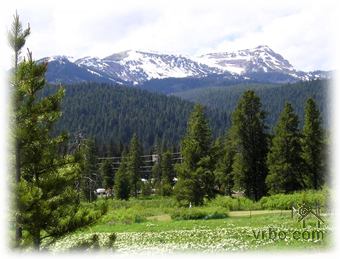 This
area has a very interesting and quite well written history. Evidence
indicates that the Eastern Shoshone (Snake) tribe spent most of their
time near the headwaters of the Henry's Fork of the Snake River, and
other large bodies of water on the Idaho side of the Continental
Divide. The Diamond 'P' Ranch is located just two miles from the
Continental Divide. Early explorers, Lewis and Clark, explored
the area; their base camp was located right at one of our trail heads!
This
area has a very interesting and quite well written history. Evidence
indicates that the Eastern Shoshone (Snake) tribe spent most of their
time near the headwaters of the Henry's Fork of the Snake River, and
other large bodies of water on the Idaho side of the Continental
Divide. The Diamond 'P' Ranch is located just two miles from the
Continental Divide. Early explorers, Lewis and Clark, explored
the area; their base camp was located right at one of our trail heads! 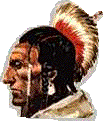 who would
occasionally leave Montana to invade. Because of the severe winters the
Idaho Indians would drop down into the Upper Snake River Valley during
the winter time months.
who would
occasionally leave Montana to invade. Because of the severe winters the
Idaho Indians would drop down into the Upper Snake River Valley during
the winter time months.  "old
time" trappers, Jim Bridger, Beaver Dick Leigh, and Kit Carson, to name
a few, suddenly became famous guides. Yellowstone Park, came into the
public's eye, and the wealthy portion of the world started to visit
this fanatstic area. As the means of transportation improved, the
"common folk" started visiting the park.
"old
time" trappers, Jim Bridger, Beaver Dick Leigh, and Kit Carson, to name
a few, suddenly became famous guides. Yellowstone Park, came into the
public's eye, and the wealthy portion of the world started to visit
this fanatstic area. As the means of transportation improved, the
"common folk" started visiting the park.
The Homestead Law, had a drastic affect on
this region during the last quarter of the 1800s and early 1900s.
Most of the area was mountainous, with lots of trees, but there were
also grassy meadows with streams running through them. These
areas attracted the homesteaders! Homesteaders by the names of Thurman,
Bishop, Allen, Golden, and Gerber, became firmly implanted in the area.
But many of the homesteaders didn't last! The harsh winters that this
area is famous for, soon drove many of the homesteaders away.
The Tom Angell family now own the Halo Ranch
Outfitters. Tom's father's and Mother's parents both homesteaded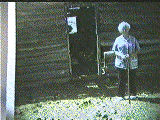 in this upper country area.
in this upper country area. 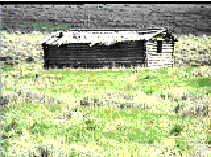 The old sod roofed
cabin on the Angell homestead in Cliff Lake Montana, pictured below, is
nearly 100 years old and it is still standing!
The old sod roofed
cabin on the Angell homestead in Cliff Lake Montana, pictured below, is
nearly 100 years old and it is still standing!
J.J.
Allen, Tom's Grandfather, homesteaded in the Island Park area known as
Ice House Creek; it's now part of the Sheridan Ranch.
![]()
The guides from the Halo Ranch Outfitters take pride in their extensive knowledge of the area's history. As they conduct horseback rides in the mountains these guides share this information with their guests. Some of this information is recorded, and a lot of it (the most interesting) is obtained from the "old timers" in the area.
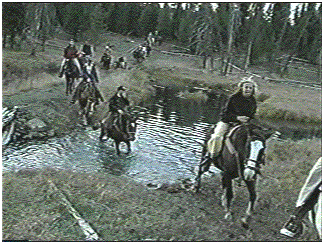
| For more historical information
please visit the following sites: http://www.yellowstone-natl-park.com/bearstor.htm |